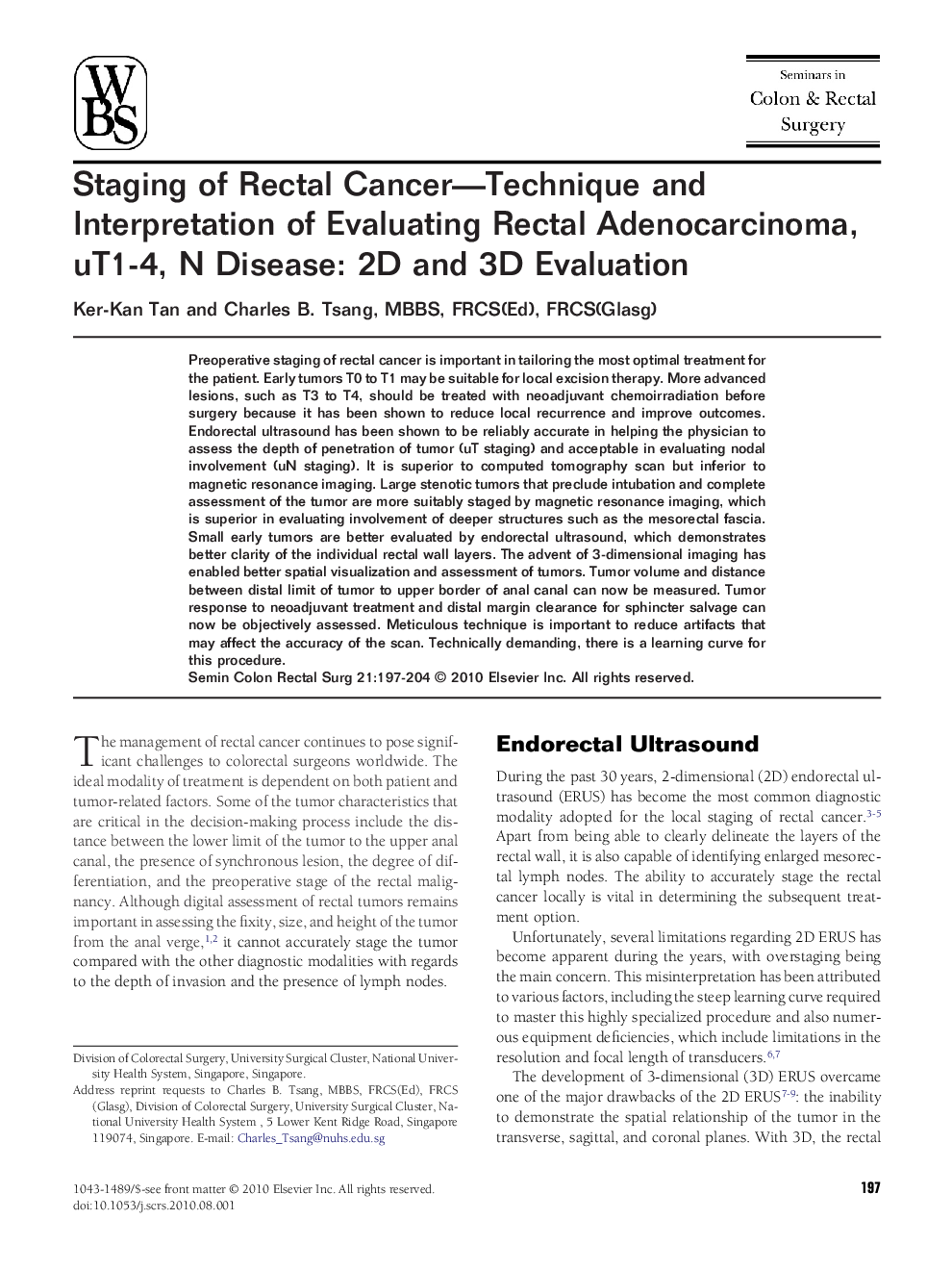| Article ID | Journal | Published Year | Pages | File Type |
|---|---|---|---|---|
| 3319308 | Seminars in Colon and Rectal Surgery | 2010 | 8 Pages |
Preoperative staging of rectal cancer is important in tailoring the most optimal treatment for the patient. Early tumors T0 to T1 may be suitable for local excision therapy. More advanced lesions, such as T3 to T4, should be treated with neoadjuvant chemoirradiation before surgery because it has been shown to reduce local recurrence and improve outcomes. Endorectal ultrasound has been shown to be reliably accurate in helping the physician to assess the depth of penetration of tumor (uT staging) and acceptable in evaluating nodal involvement (uN staging). It is superior to computed tomography scan but inferior to magnetic resonance imaging. Large stenotic tumors that preclude intubation and complete assessment of the tumor are more suitably staged by magnetic resonance imaging, which is superior in evaluating involvement of deeper structures such as the mesorectal fascia. Small early tumors are better evaluated by endorectal ultrasound, which demonstrates better clarity of the individual rectal wall layers. The advent of 3-dimensional imaging has enabled better spatial visualization and assessment of tumors. Tumor volume and distance between distal limit of tumor to upper border of anal canal can now be measured. Tumor response to neoadjuvant treatment and distal margin clearance for sphincter salvage can now be objectively assessed. Meticulous technique is important to reduce artifacts that may affect the accuracy of the scan. Technically demanding, there is a learning curve for this procedure.
